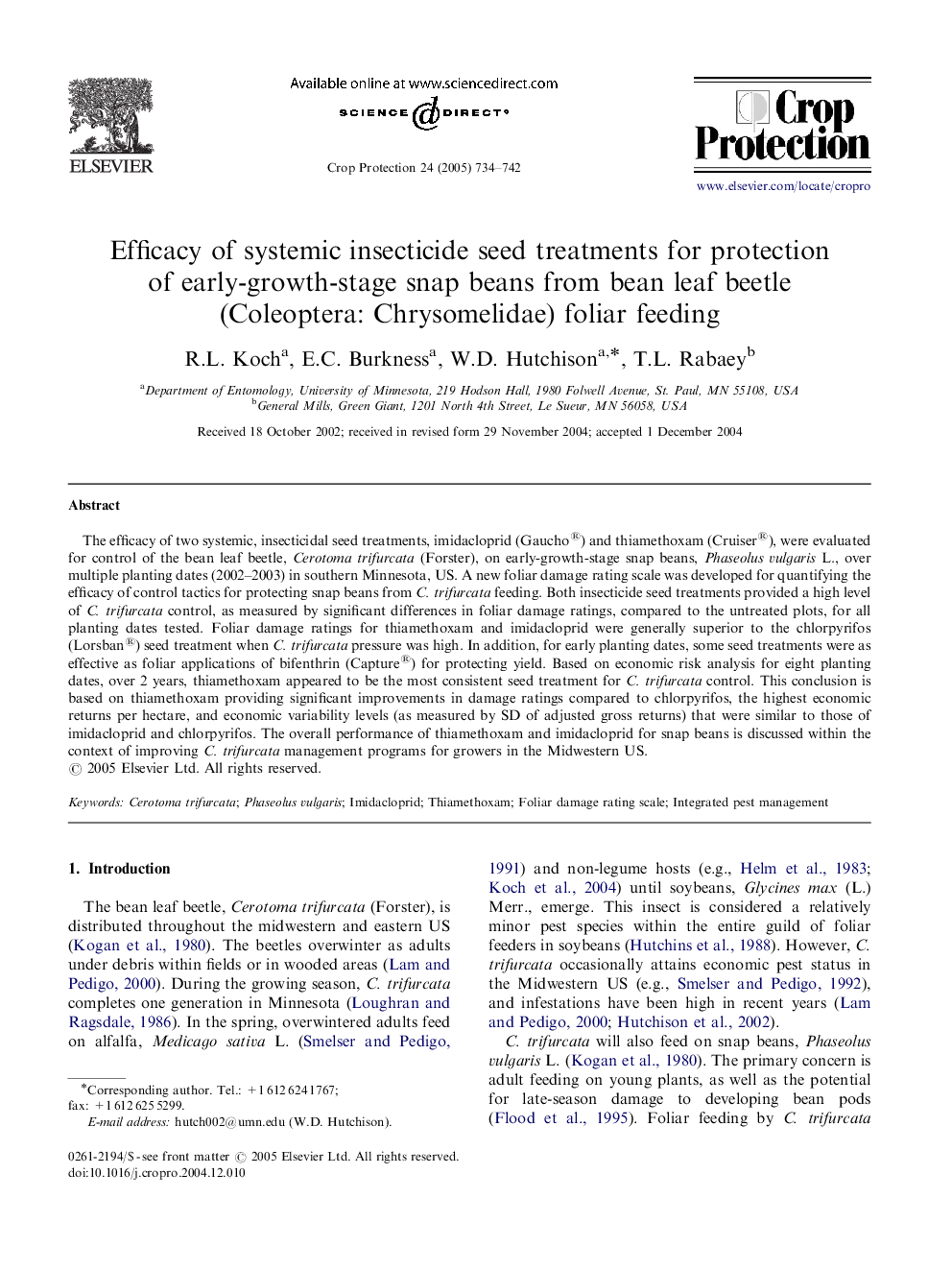| Article ID | Journal | Published Year | Pages | File Type |
|---|---|---|---|---|
| 9472674 | Crop Protection | 2005 | 9 Pages |
Abstract
The efficacy of two systemic, insecticidal seed treatments, imidacloprid (Gaucho®) and thiamethoxam (Cruiser®), were evaluated for control of the bean leaf beetle, Cerotoma trifurcata (Forster), on early-growth-stage snap beans, Phaseolus vulgaris L., over multiple planting dates (2002-2003) in southern Minnesota, US. A new foliar damage rating scale was developed for quantifying the efficacy of control tactics for protecting snap beans from C. trifurcata feeding. Both insecticide seed treatments provided a high level of C. trifurcata control, as measured by significant differences in foliar damage ratings, compared to the untreated plots, for all planting dates tested. Foliar damage ratings for thiamethoxam and imidacloprid were generally superior to the chlorpyrifos (Lorsban®) seed treatment when C. trifurcata pressure was high. In addition, for early planting dates, some seed treatments were as effective as foliar applications of bifenthrin (Capture®) for protecting yield. Based on economic risk analysis for eight planting dates, over 2 years, thiamethoxam appeared to be the most consistent seed treatment for C. trifurcata control. This conclusion is based on thiamethoxam providing significant improvements in damage ratings compared to chlorpyrifos, the highest economic returns per hectare, and economic variability levels (as measured by SD of adjusted gross returns) that were similar to those of imidacloprid and chlorpyrifos. The overall performance of thiamethoxam and imidacloprid for snap beans is discussed within the context of improving C. trifurcata management programs for growers in the Midwestern US.
Related Topics
Life Sciences
Agricultural and Biological Sciences
Agronomy and Crop Science
Authors
R.L. Koch, E.C. Burkness, W.D. Hutchison, T.L. Rabaey,
